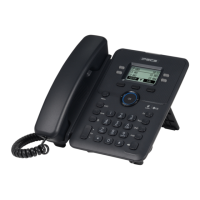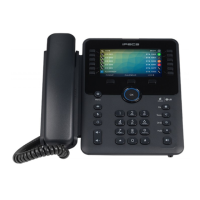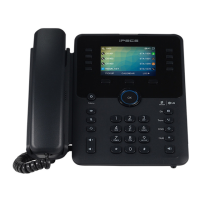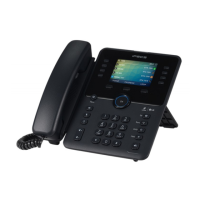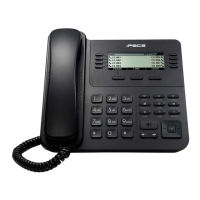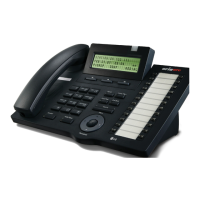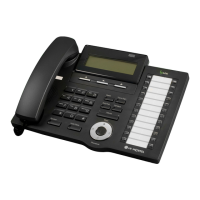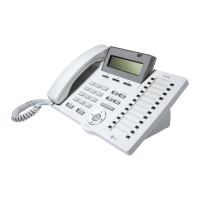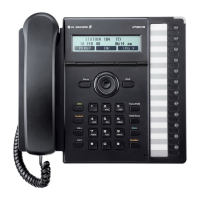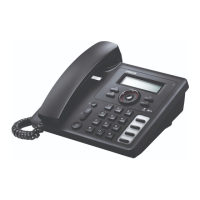Do you have a question about the LG-Ericsson IPECS 1020i and is the answer not in the manual?
| Brand | LG-Ericsson |
|---|---|
| Model | IPECS 1020i |
| Category | IP Phone |
| Language | English |
General overview of the iPECS phone system and its VoIP technology.
Overview of the user guide structure and how features are presented.
How to input user-specific configuration data and attributes using special codes.
Explanation of how features are organized logically within the manual.
Description of the phone's capabilities, technology, and key components.
Details on operating and understanding the phone's display and icons.
Guide to activating and using the speakerphone feature for calls.
Procedures for answering incoming calls when the phone is not in use.
Managing incoming calls when already on an active call.
Functionality to screen calls via voice mailbox.
Customizing ring tones to identify callers.
Specific call answering procedures for night mode.
How to pick up calls intended for other extensions.
Activating DND to prevent interruptions and block incoming calls.
Diverting incoming calls to other destinations like stations or voicemail.
Placing calls to other extensions within the system using intercom.
Making calls to numbers outside the system using outside lines.
Managing and using phone directories for contact information.
Sending active calls to other destinations, with or without screening.
Placing active calls on hold, either in System or Exclusive Hold.
Switching between active and held calls to manage multiple conversations.
Setting up and managing conference calls with multiple parties.
Placing calls on hold for paging notification to the desired user.
Recording external conversations for later review.
Managing message waiting indicators and initiating callbacks.
Accessing and managing voice messages from the mailbox.
Exchanging text messages with other iPECS display phone users.
Using the phone system features on a mobile phone when away from the desk.
Reviewing incoming, outgoing, and missed calls history.
Adjusting the LCD screen brightness for better readability.
Playing music on the phone during idle periods.
Broadcasting announcements to specific zones or external speakers.
Using push-to-talk for one-way group announcements.
Setting and managing alarm functions, one-time or repeating.
Monitoring external alarm or door bell contacts.
Listening to system status messages like date, time, and feature status.
Logging into and using other stations as your own.
General introduction to the phone's menu system and its capabilities.
Navigating through the phone's menu system to access settings.
Assigning user attributes and settings using special program codes.
Customizing flexible buttons for one-touch feature activation.
Using a web interface for comprehensive phone configuration.
